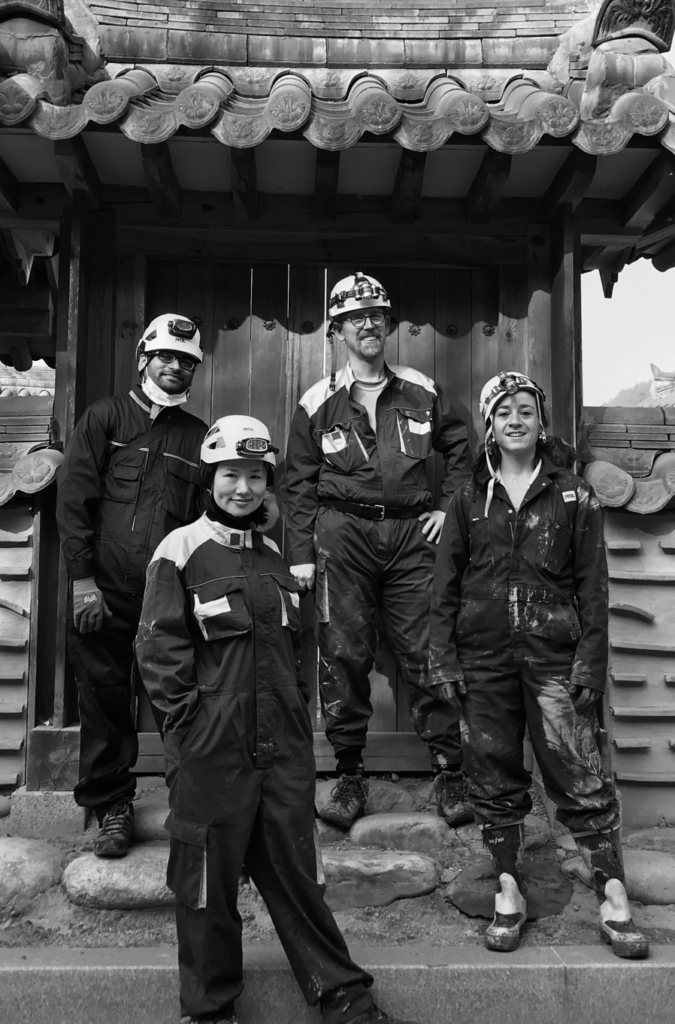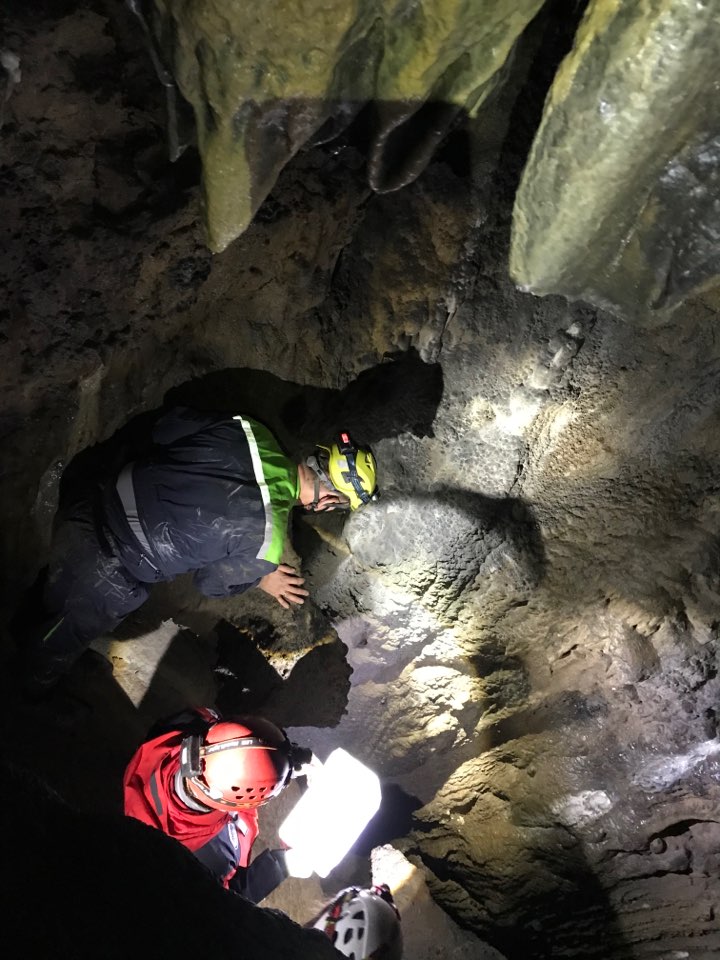
Ji-Eun Kim, Valentina Vanghi (down)
One of ICCP’s missions is to develop a better understanding of how and why the East Asian Monsoon system has changed in the past. The key data for this endeavor will come from Korean and Chinese stalagmites. Stalagmites are largely composed of calcite (CaCO3), which comes with different isotopes of oxygen and carbon. Changes in the isotopic composition of calcite can tell scientist something about past rainfall, water vapor, atmospheric circulation, temperature and soil conditions. To be able to interpret these isotopic variations, it is important to monitor first the drip water and calcification processes inside caves.

In November, 2020, ICCP scientists (Ji-Eun Kim, Nitesh Sinha, Valentina Vanghi and Axel Timmermann), together with Prof. Kyoung-nam Jo and his team from Kangwon National University, visited several caves in the northeastern part of the country to identify optimal locations for future cave monitoring. The initial survey helped to identify one potential site in the Danyang region for future monitoring.
In the meanwhile the isotopic analysis of existing stalagmite samples from South Korean caves continues in the ICCP isotope lab. ICCP scientists currently focus on the famous “Mystery Interval” (18-11 thousand years ago). During this time the climate system was punctuated by several major reorganizations of the Atlantic Ocean circulation, carbon cycle and ice-sheet changes. Nitesh Sinha is currently investigating the magnitude of regional temperature changes in Korea during this period using clumped isotope measurements performed on ICCP’s Isotope Ratio Mass spectrometer.
As of October, ICCP scientists are also able to cut and sample their own speleothem samples using a newly purchased Diamond Wire Saw. With this specially-designed saw, large speleothem samples (up to 30 cm in diameter) can be cut cleanly, without the need to subsequent polishing. This will help identify the growth structure of the stalagmite samples.
Future plans for the speleo-group include fluid inclusion isotope monitoring and cave metagenomic mapping.
